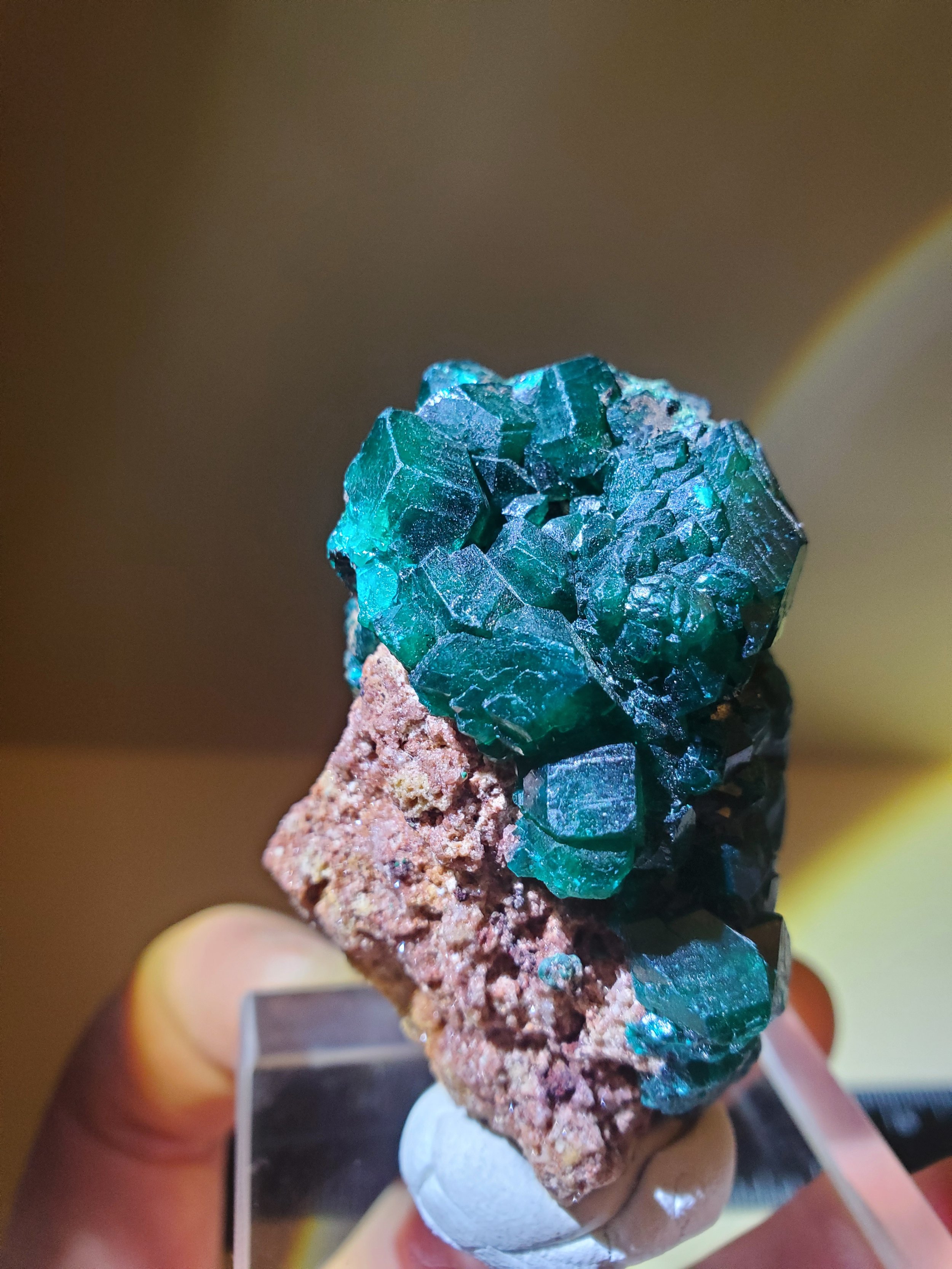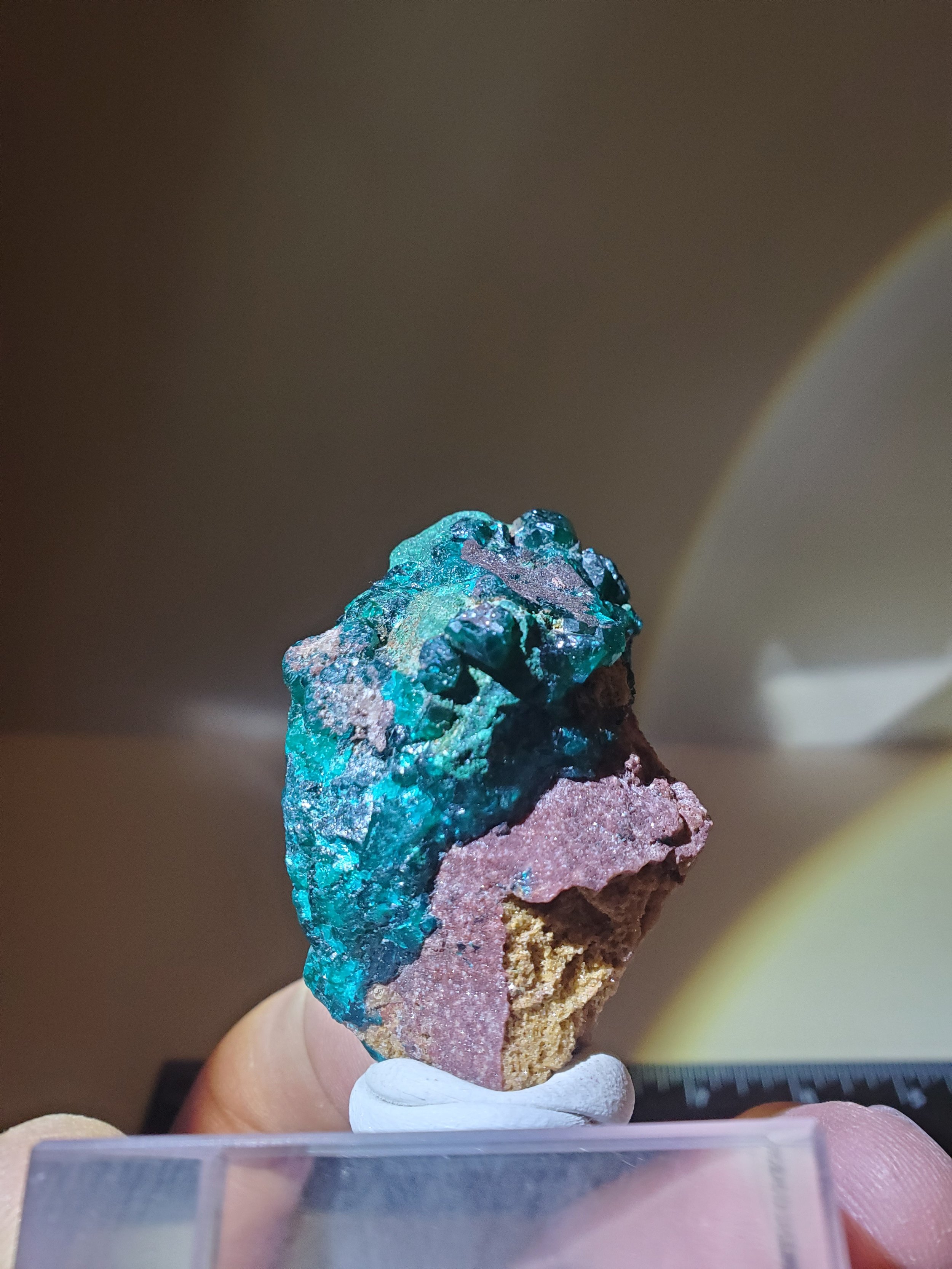 Image 1 of 11
Image 1 of 11

 Image 2 of 11
Image 2 of 11

 Image 3 of 11
Image 3 of 11

 Image 4 of 11
Image 4 of 11

 Image 5 of 11
Image 5 of 11

 Image 6 of 11
Image 6 of 11

 Image 7 of 11
Image 7 of 11

 Image 8 of 11
Image 8 of 11

 Image 9 of 11
Image 9 of 11

 Image 10 of 11
Image 10 of 11

 Image 11 of 11
Image 11 of 11












Dioptase
DESCRIPTION2.5 Ounces
71 Grams
2 1/4” x 1 1/2” x 1 1/2"
Natural specimen from Congo.
Dioptase is a rare, translucent to transparent, emerald-green to bluish-green mineral that's associated with copper deposits:
Color
Dioptase is known for its rich, emerald-green color, sometimes with a blue tint.
Formation
Dioptase is a secondary mineral that forms when primary minerals in limestone or calcite weather and oxidize. It requires warm, dry conditions, so it's mined in arid regions.
Name
The name dioptase comes from the Greek words dia mesou, meaning "through", and optasia, meaning "vision". This refers to the ability to see the mineral's cleavage planes in unbroken and translucent specimens.
Properties
Dioptase is fragile, with a Mohs hardness of 5, the same as tooth enamel. It has a vitreous to sub-adamantine luster, and its cleavage is perfect in three directions.
Uses
Dioptase is cherished for its aesthetic beauty and is sometimes associated with emotional healing, compassion, and spiritual growth. However, because it's so soft, it doesn't make long-lasting jewelry.
Locations
Dioptase is mined in many locations around the world, including Kazakhstan, Tsumeb, Namibia, the Central Asian steppes, Romania, the United States, Argentina, Chile, the Congo Republic, the Democratic Republic of the Congo, and Angola.
Associated minerals
Dioptase can form in close association with malachite, another copper-bearing mineral. Specimens sometimes described as "emerald malachite" have crystalline formations that appear "gemmy" like emeralds.
DESCRIPTION2.5 Ounces
71 Grams
2 1/4” x 1 1/2” x 1 1/2"
Natural specimen from Congo.
Dioptase is a rare, translucent to transparent, emerald-green to bluish-green mineral that's associated with copper deposits:
Color
Dioptase is known for its rich, emerald-green color, sometimes with a blue tint.
Formation
Dioptase is a secondary mineral that forms when primary minerals in limestone or calcite weather and oxidize. It requires warm, dry conditions, so it's mined in arid regions.
Name
The name dioptase comes from the Greek words dia mesou, meaning "through", and optasia, meaning "vision". This refers to the ability to see the mineral's cleavage planes in unbroken and translucent specimens.
Properties
Dioptase is fragile, with a Mohs hardness of 5, the same as tooth enamel. It has a vitreous to sub-adamantine luster, and its cleavage is perfect in three directions.
Uses
Dioptase is cherished for its aesthetic beauty and is sometimes associated with emotional healing, compassion, and spiritual growth. However, because it's so soft, it doesn't make long-lasting jewelry.
Locations
Dioptase is mined in many locations around the world, including Kazakhstan, Tsumeb, Namibia, the Central Asian steppes, Romania, the United States, Argentina, Chile, the Congo Republic, the Democratic Republic of the Congo, and Angola.
Associated minerals
Dioptase can form in close association with malachite, another copper-bearing mineral. Specimens sometimes described as "emerald malachite" have crystalline formations that appear "gemmy" like emeralds.
